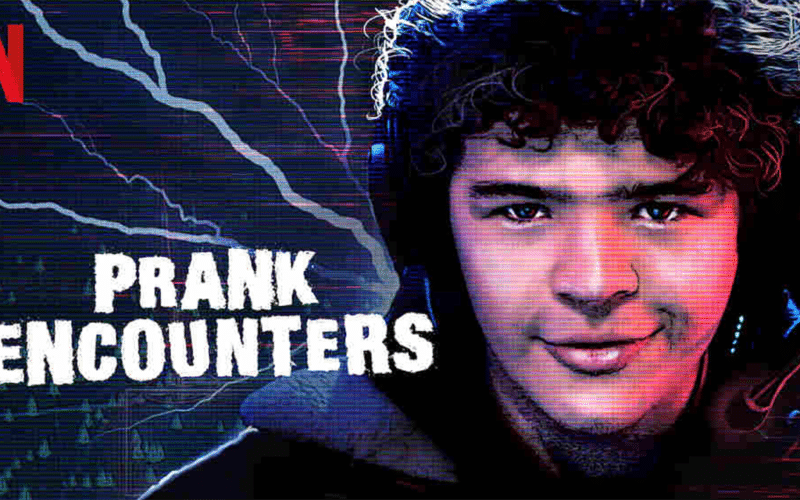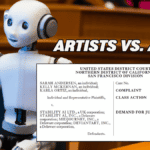A judge rules on a motion to dismiss copyright infringement claims brought by the co-creator of “Scare Tactics” against his former business partner and the producer of “Prank Encounters,” another hidden camera prank/scare show.
Hidden camera prank and practical joke programs have been a television staple going all the way back to “Candid Camera” in the late 1940s to more modern incarnations like “Punk’d.” These shows typically follow a particular format: unsuspecting “marks” are placed in a staged setting, with their reactions to increasingly-bizarre set ups filmed by hidden cameras for comedic or voyeuristic effect. My personal favorite is probably “To Catch a Predator,” although that one may have been unintentionally humorous.
One variation on the hidden camera prank show genre involves putting the “marks” in terrifying situations and filming their frightened reactions. Two of these programs, “Scare Tactics” and “Prank Encounters,” are the subject of a copyright lawsuit currently pending in Los Angeles. Apparently it’s all fun and games until someone either has a heart attack or is sued for copyright infringement.
The Claim
Plaintiff Scott Hallock and defendant Kevin Healey used to be business partners in the appropriately-named Hallock Healey Entertainment. Hallock Healey produced several hidden camera reality shows, including the previously mentioned “Scare Tactics,” along with such instant classics as “Betty White’s Off Their Rockers” and “Breaking Up with Shannen Doherty.”
“Scare Tactics” was the most successful of the Hallock Healey programs, running for five seasons (originally on Syfy) between 2003 and 2013.
Hallock and Healey later had a falling out and agreed to end their business relationship. As part of a 2016 settlement agreement, Healey gave up his copyright interests in “Scare Tactics,” but retained the right to “pursu[e] other scary, paranormal themed or hidden camera shows.”
The now Hallock-free Healey joined up with Propagate Content to produce a new hidden camera show called “Prank Encounters” which premiered last year. The now Healey-free Hallock was none too pleased, and filed a lawsuit against Healey and Propagate in March for copyright infringement, breach of the implied covenant of good faith and fair dealing, tortious interference and breach of contract.
Healey and Propagate brought a motion to dismiss the complaint, which alleged that eight different episodes of “Prank Encounters” infringe the copyrights in corresponding episodes of “Scare Tactics.”
The Motion to Dismiss
Last week, Central District of California Judge Cormac Carney ruled that Hallock’s claim could proceed for infringement on four of the “Scare Tactics” episodes, but granted the defendant’s motion to dismiss on the other four.
As an aside, I have to hand it to the judge and his clerks for making it through 16 episodes of these shows. I had planned on watching a few episodes before writing this post, but could only make it through one segment of each program. As between the shows, “Scare Tactics” was more palatable, but this may have been because each segment only lasted five minutes, while “Prank Encounters” went on for an increasingly-painful 24 minutes, and featured that annoying kid from “Stranger Things” to boot.
Anyway, as I’ve discussed in earlier posts, plaintiffs will often file motions to dismiss at the beginning of a copyright lawsuit, so long as the works at issue are before the court and can be compared. At this stage, the court is only permitted to apply what the Ninth Circuit refers to as the “extrinsic test” for substantial similarity, which focuses on similarities between the plot, themes, dialogue, mood, setting, pace, characters and sequence of events in the two works.
If there aren’t enough similarities between specific elements of expression in the works (as opposed to underlying ideas, which aren’t protectable), the court can dismiss the claim at the pleading stage. If, on the other hand, the court finds sufficient allegations of substantial similarity to satisfy the extrinsic test, the case will proceed.
Comparing the Works
Comparing eight episodes of “Prank Encounters” with “Scare Tactics” and applying the extrinsic test, the court found that claims on half of the eight episodes could proceed, but dismissed the claims as to the other half. I’ve heard that the plaintiffs originally wanted to bring a claim on a ninth episode that would have broken the tie, but Mitch McConnell blocked it.
The two particular segments I watched were among those the court found to have stated a plausible claim. Both shows featured unsuspecting “marks” hired to be caregivers for the purported wife of an apparently loving husband. Both wives are said to be bedridden due to accidents that require them to be sedated. In each episode, the husband exits the room, leaving the caregiver alone with the wife. The woman then wakes up and reveals to the mark that she is not in fact the man’s wife but was kidnapped and is being held captive by an obsessive man. The scenarios would be pretty terrifying if the acting weren’t so bad.
In “Prank Encounters,” the man is obsessed with his late wife who he is trying to replace by performing plastic surgery on the kidnapped woman. In “Scare Tactics” the man appears to be obsessed with the actual kidnapped woman but is not her husband. Other differences stem from the fact that “Prank Encounters” is a much longer show with a more drawn out premise. It also involves two different marks who start out engaged in different tasks with different actors, but who eventually “collide,” at which point they jointly face the crisis until the end.
The court’s order goes through a similar “extrinsic test” analysis for each of the eight allegedly infringed “Scare Tactic” episode segments. If the case end up getting does getting all the way to a trial, a jury would be tasked with determining whether the “total concept and feel” of the works are similar using the so-called “intrinsic test.”
Copyright Preemption
In addition to dismissing four of the eight infringement claims, the court also dismissed the plaintiff’s claims for breach of the implied covenant of good faith and fair dealing and interference with contract, finding that those claims were “preempted” by the Copyright Act.
At some point I’ll write a post devoted to preemption, but for now, I’ll just note that a state law claim (such as breach of contract) involving a work that comes within the subject matter of copyright is preempted when the plaintiff asserts rights that are equivalent to those protected by the Copyright Act (such as the rights of reproduction and distribution).
Here, the court found that the plaintiffs’ claims for breach of the implied covenant of good faith and fair dealing and interference with contract were preempted because they were premised on a theory that defendants copied Healey’s intellectual property in violation of the parties’ settlement agreement. This was fundamentally equivalent to a copyright claim.
Conversely, the court found that Hallock’s claim that Healey breached a contractual duty to account (the promise to pay certain revenues if he exploited protected elements from another show called “Freak Encounters”) did state an “extra element” and therefore was allowed to proceed. (Until I replace it with something new, here’s an old post on why the manner in which a claim is plead can make a difference in the preemption analysis).
If you’re interested in comparing “Scare Tactics” and “Prank Encounters” for yourself, both shows are currently streaming on Netflix—which may also explain why Netflix wasn’t named as a defendant in the current lawsuit. After you’ve taken a look, I’d be interested to hear what you think of the plaintiffs’ claims in the comments below or on one of our social media accounts.







1 comment
Dear Aaron,
I must applaud your testicular fortitude, if you’ve actually made it through an entire episode of ANY of these ridiculous, cruel, inherently-EVIL, utter and complete WASTES of perfectly good television-production-wherewithal and airtime. I’ve never managed that particular, Herculean feat…
A tip of my hat to you, sir!
The furthest I can ever get is thinking to myself, “Well, if that had been ME as their ‘victim’, and I had actually ‘fallen-for’ the storyline, then THAT guy, there, in the ‘scary makeup du jour’, would almost certainly be nursing a fractured [insert applicable bone name here] by now, simply in self-defense, legitimately fearing for my life. Then, having been informed by panic-stricken crew members that it was all ‘just a gag’, the first camera I located would be shattered into thousands of tiny little pieces, followed by the entire production company being hauled-off in some combination of bandages and handcuffs, to answer to a veritable plethora of civil and criminal charges!”
…and then I change the channel, fervently hoping these MORONS don’t KILL anybody with their STUPID-ASS CRAP, whilst lamenting, yet again, the WORTHLESS DREK that passes for “entertainment” these days…
Sincerely,
H. Hall